Your cart is currently empty!
Tag: Revolutionizing

How LSTM is Revolutionizing Natural Language Processing
Natural Language Processing (NLP) is an area of artificial intelligence that focuses on the interaction between humans and computers using natural language. It has become an essential tool for businesses looking to analyze and understand large amounts of text data, such as customer reviews, social media posts, and emails.One of the most exciting advancements in NLP in recent years has been the use of Long Short-Term Memory (LSTM) networks. LSTM is a type of recurrent neural network (RNN) that is designed to handle sequences of data, making it particularly well-suited for tasks such as speech recognition, text generation, and sentiment analysis.
LSTM networks are able to remember long-term dependencies in data, which is crucial for understanding the context of words in a sentence. Traditional RNNs suffer from the vanishing gradient problem, which makes it difficult for them to learn from sequences that are too long. LSTM networks, on the other hand, use a more sophisticated architecture that allows them to capture long-range dependencies in data.
One of the key features of LSTM networks is their ability to learn from input sequences and produce output sequences of varying lengths. This makes them ideal for tasks such as machine translation and text summarization, where the length of the input and output sequences may vary.
Another benefit of LSTM networks is their ability to handle noisy and sparse data. They can be trained on large amounts of text data and still produce accurate and meaningful results, even when the input data is noisy or contains missing information.
One of the most popular applications of LSTM networks in NLP is sentiment analysis. Sentiment analysis involves determining the emotional tone of a piece of text, such as whether a customer review is positive or negative. LSTM networks have been shown to outperform traditional machine learning algorithms in sentiment analysis tasks, due to their ability to capture the context and semantics of words in a sentence.
Overall, LSTM networks are revolutionizing NLP by enabling more accurate and efficient analysis of text data. Businesses are increasingly using LSTM networks to extract valuable insights from text data, such as customer feedback and social media posts. As the field of NLP continues to evolve, LSTM networks will play an increasingly important role in helping businesses make sense of the vast amounts of text data available to them.
#LSTM #Revolutionizing #Natural #Language #Processing,lstm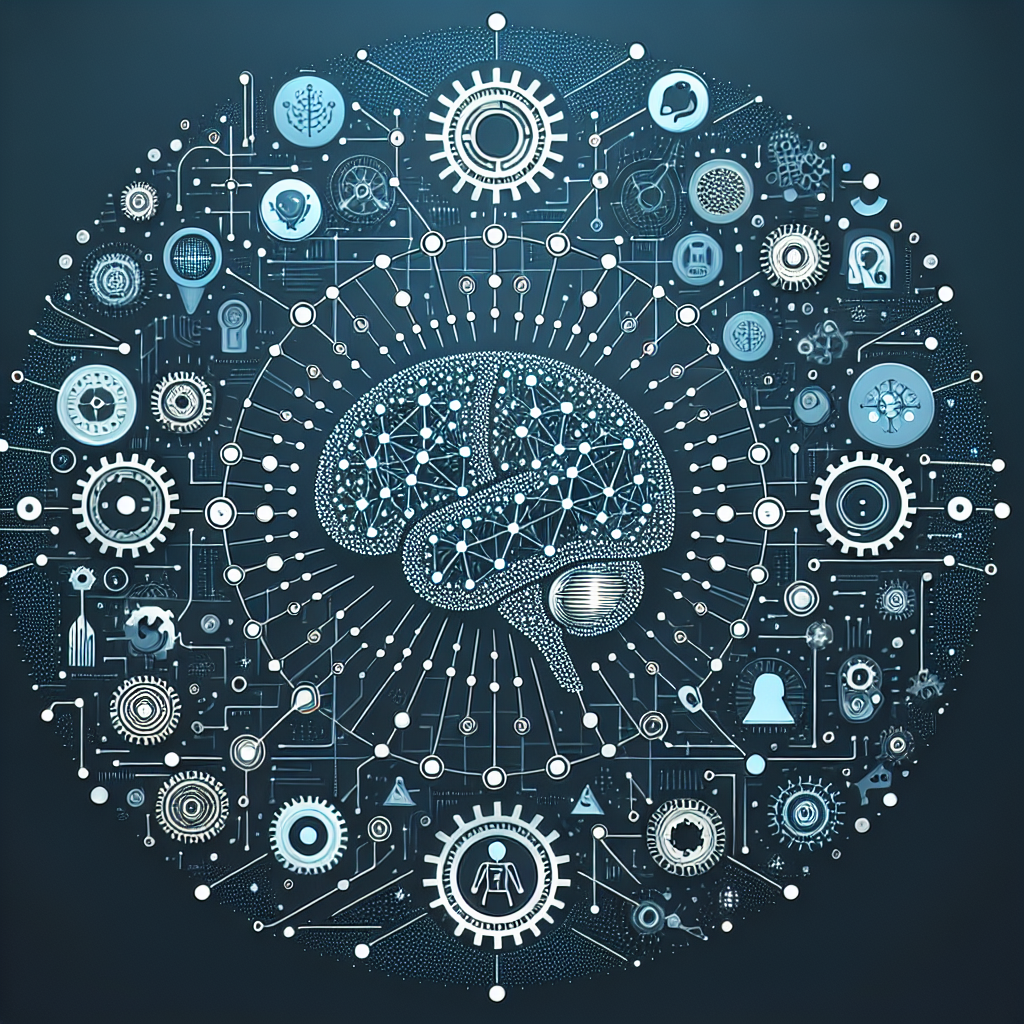
How Deep Neural Networks (DNN) are Revolutionizing Artificial Intelligence
Deep Neural Networks (DNN) have been at the forefront of revolutionizing artificial intelligence in recent years. These complex, multi-layered networks of interconnected nodes are modeled after the human brain and have shown incredible potential for solving complex problems and making sense of vast amounts of data.One of the key strengths of DNNs is their ability to learn and adapt on their own. Through a process known as deep learning, these networks are trained on large datasets to recognize patterns and make predictions. This has enabled DNNs to excel in a wide range of tasks, from image and speech recognition to natural language processing and autonomous driving.
DNNs have also proven to be highly effective at tasks that were previously thought to be too difficult for machines, such as playing complex games like Go or poker. In fact, DNN-powered systems have defeated human champions in games like chess and Go, demonstrating the power of these networks to excel in strategic decision-making.
Another key advantage of DNNs is their scalability. As computing power continues to increase, DNNs are able to handle larger and more complex datasets, making them ideal for tackling big data problems in fields like healthcare, finance, and marketing. This has led to significant advancements in areas such as personalized medicine, fraud detection, and customer segmentation.
Furthermore, DNNs have also been instrumental in driving advancements in computer vision and natural language processing. These technologies have enabled breakthroughs in areas like autonomous vehicles, facial recognition, and language translation, paving the way for new applications and services that were once only possible in science fiction.
Despite their many strengths, DNNs are not without their limitations. Training these networks can be computationally intensive and require large amounts of labeled data, which can be costly and time-consuming. Additionally, DNNs can be prone to biases and errors, leading to potential ethical concerns and challenges in deploying these systems in real-world scenarios.
Overall, deep neural networks have revolutionized artificial intelligence by pushing the boundaries of what machines can achieve. As researchers continue to innovate and refine these networks, the potential for DNNs to transform industries and improve our daily lives is truly limitless.
#Deep #Neural #Networks #DNN #Revolutionizing #Artificial #Intelligence,dnn
How NLP is Revolutionizing Gan: A Comprehensive Analysis
Natural Language Processing (NLP) is a branch of artificial intelligence that focuses on the interaction between computers and humans using natural language. It has been making significant strides in the field of Generative Adversarial Networks (GANs), a type of artificial intelligence algorithm used to generate new data samples.GANs are commonly used in tasks such as image generation, text-to-image synthesis, and style transfer. However, they often struggle with generating high-quality and diverse samples. This is where NLP comes in to revolutionize GANs by enhancing their capabilities and improving the quality of the generated samples.
One way NLP is revolutionizing GANs is through the use of text as input. By providing textual descriptions of what the generated samples should look like, NLP can help GANs create more realistic and diverse images. This approach, known as text-to-image synthesis, has been used to generate photorealistic images based on textual descriptions.
Another way NLP is revolutionizing GANs is by improving the coherence and consistency of the generated samples. By incorporating NLP techniques such as language modeling and text generation, GANs can produce more coherent and realistic samples that follow a logical sequence. This is particularly useful in tasks such as generating dialogue responses or creating storylines.
Furthermore, NLP can also help GANs overcome biases and improve diversity in the generated samples. By analyzing and understanding the language used in the training data, NLP can identify and mitigate biases that may exist in the generated samples. This ensures that the GANs produce diverse and unbiased outputs that accurately reflect the real-world data.
Overall, the integration of NLP techniques into GANs is revolutionizing the field of artificial intelligence by improving the quality, diversity, and coherence of generated samples. This has a wide range of applications in various industries, including entertainment, e-commerce, and healthcare. As NLP continues to advance, we can expect to see even more groundbreaking advancements in the field of GANs.
#NLP #Revolutionizing #Gan #Comprehensive #Analysis,gan)
to natural language processing (nlp) pdf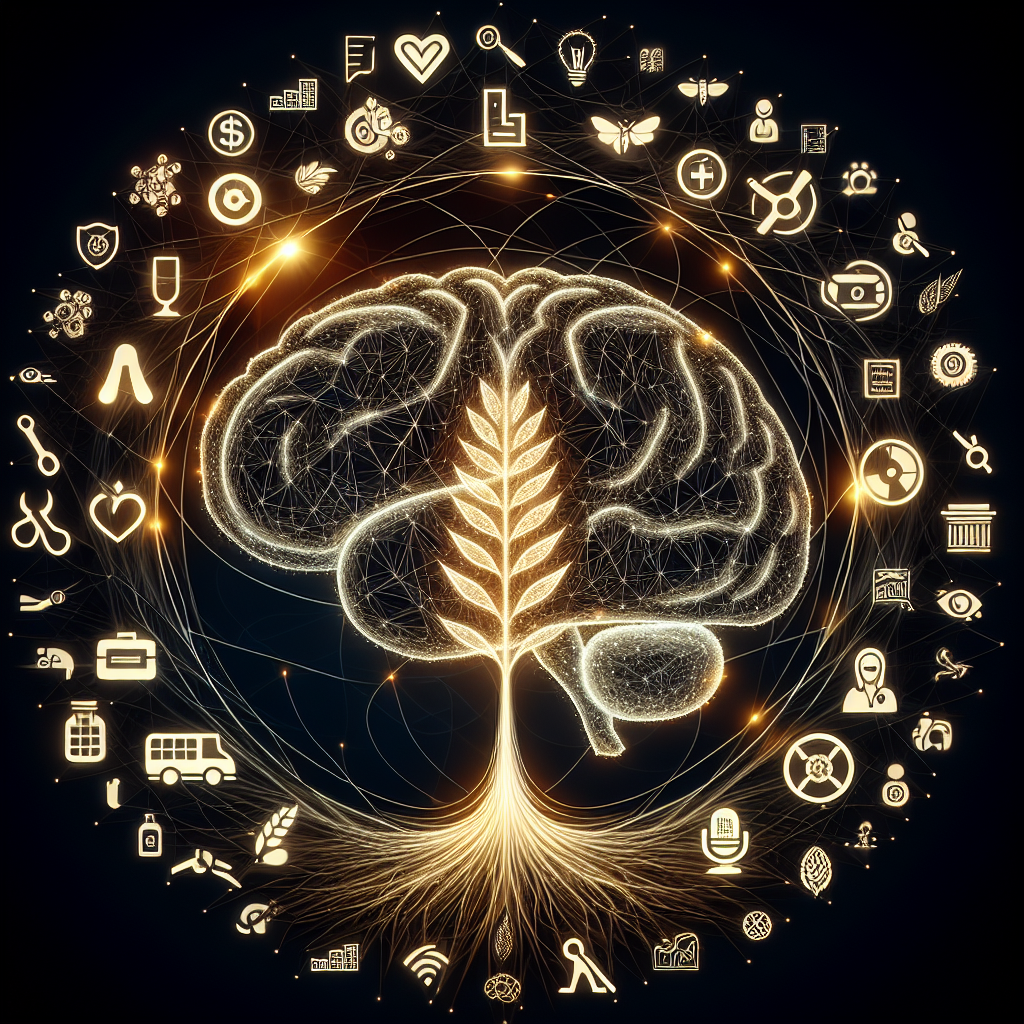
The Future of AI: How Deep Neural Networks are Revolutionizing Industries
Artificial Intelligence (AI) has come a long way since its inception, and one of the most exciting developments in recent years is the rise of deep neural networks. These complex algorithms are modeled after the human brain and are capable of learning and making decisions on their own, without explicit programming.Deep neural networks have already started revolutionizing industries across the board, from healthcare to finance to entertainment. Their ability to analyze vast amounts of data and recognize patterns has led to breakthroughs in areas such as image recognition, natural language processing, and autonomous driving.
In the healthcare industry, deep neural networks are being used to analyze medical images and diagnose diseases with incredible accuracy. This has the potential to revolutionize the way diseases are detected and treated, leading to better outcomes for patients.
In the finance sector, deep neural networks are being used to predict market trends and make investment decisions. By analyzing historical data and identifying patterns, these algorithms are able to make more informed decisions than human traders, leading to higher returns and reduced risk.
In the entertainment industry, deep neural networks are being used to personalize content for users. Streaming services like Netflix and Spotify use these algorithms to recommend movies, TV shows, and music based on a user’s preferences, leading to a more engaging and enjoyable user experience.
The future of AI and deep neural networks is incredibly bright, with endless possibilities for innovation and growth. As these algorithms become more sophisticated and powerful, we can expect to see even more profound changes across industries, from improved customer service to more efficient manufacturing processes.
However, with these advancements also comes the need for careful consideration of ethical and privacy concerns. As deep neural networks become more ingrained in our daily lives, it’s important to ensure that they are being used responsibly and ethically, with proper safeguards in place to protect user data and maintain transparency.
Overall, the future of AI and deep neural networks is incredibly exciting, with the potential to revolutionize industries and improve our lives in ways we never thought possible. By embracing these technologies and harnessing their power, we can look forward to a future where innovation knows no bounds.
#Future #Deep #Neural #Networks #Revolutionizing #Industries,dnn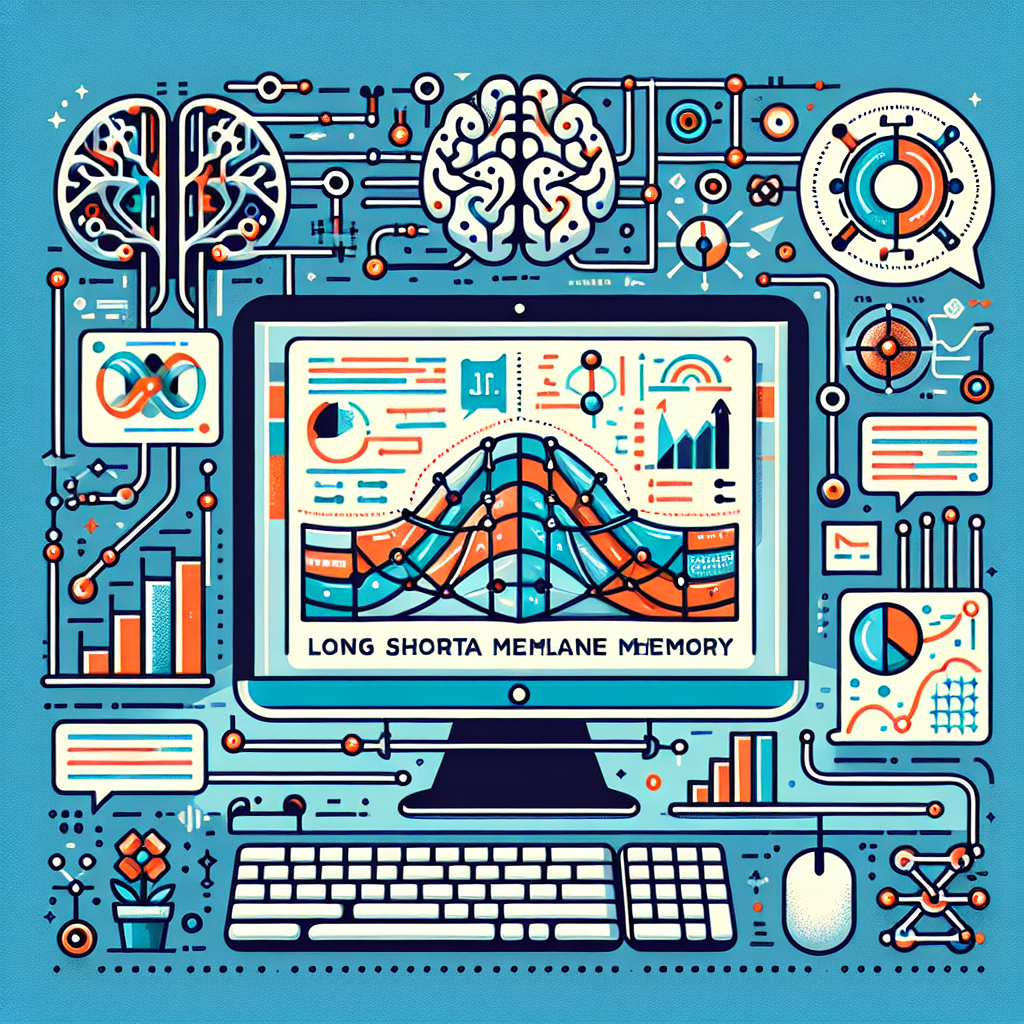
How LSTM Networks are Revolutionizing Natural Language Processing
Natural Language Processing (NLP) is a branch of artificial intelligence that focuses on the interaction between computers and humans using natural language. One of the key technologies driving advancements in NLP is Long Short-Term Memory (LSTM) networks.LSTM networks are a type of recurrent neural network (RNN) that is capable of learning long-term dependencies in sequential data. This makes them particularly well-suited for tasks that involve processing and understanding natural language, such as language translation, sentiment analysis, and speech recognition.
One of the key features of LSTM networks is their ability to remember important information over long periods of time. This is achieved through a series of specialized memory cells that can store information for extended periods, preventing the network from forgetting important context.
This ability to retain long-term dependencies makes LSTM networks particularly effective for tasks that involve understanding and generating natural language. For example, in language translation, LSTM networks can effectively capture the nuances of different languages and produce accurate translations.
Another key advantage of LSTM networks is their ability to handle variable-length input sequences. This flexibility allows them to process and understand text of varying lengths, making them ideal for tasks that involve analyzing and generating text.
Additionally, LSTM networks can be trained on large amounts of text data, enabling them to learn complex patterns and relationships in language. This makes them highly effective for tasks such as sentiment analysis, where the network must understand the emotional tone of a piece of text.
Overall, LSTM networks are revolutionizing the field of natural language processing by enabling more accurate and efficient processing of text data. Their ability to learn long-term dependencies, handle variable-length input sequences, and analyze large amounts of text data make them a powerful tool for a wide range of NLP tasks.
As researchers continue to explore the potential of LSTM networks in NLP, we can expect to see even more advancements in the field, leading to more sophisticated and accurate natural language processing systems.
#LSTM #Networks #Revolutionizing #Natural #Language #Processing,lstm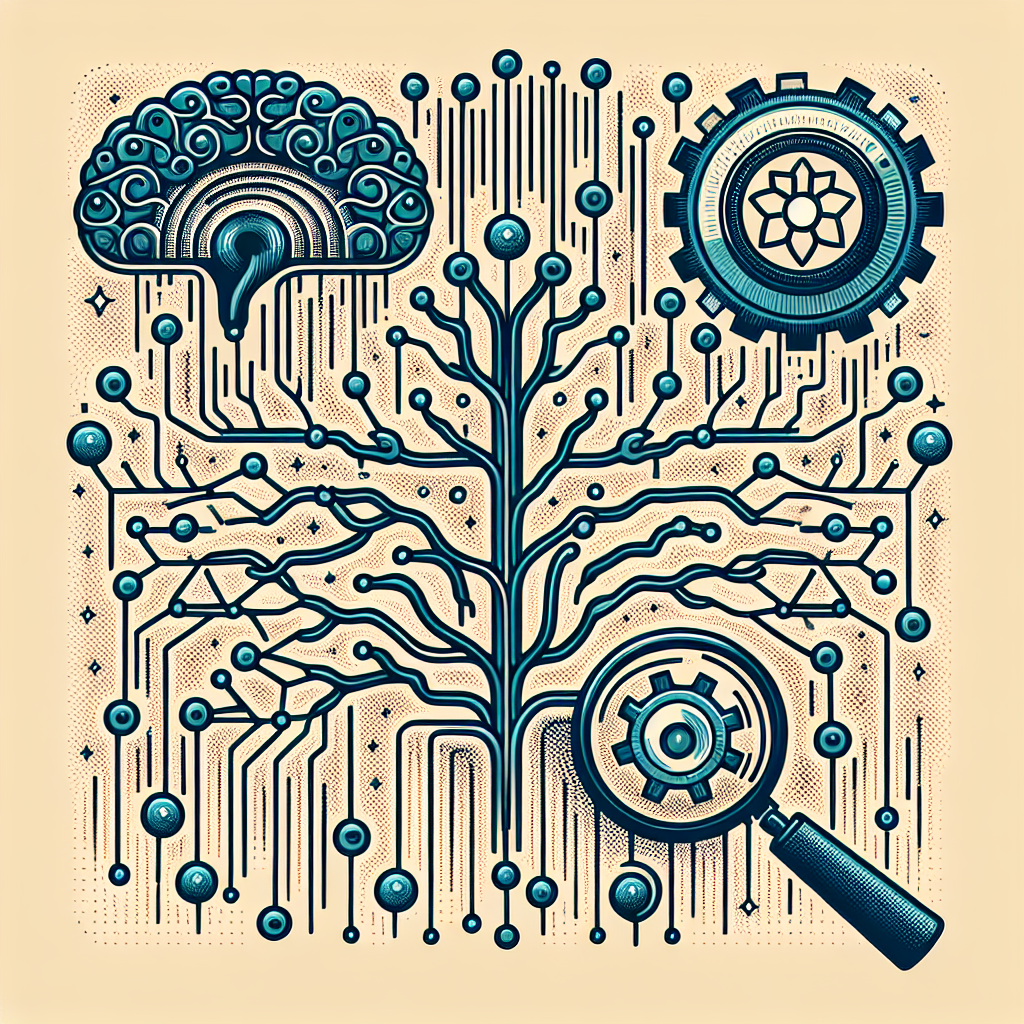
How DNN is Revolutionizing Machine Learning and Data Analysis
In today’s rapidly evolving technological landscape, machine learning and data analysis have become integral components of decision-making processes across various industries. One of the key technologies driving this transformation is deep neural networks (DNN), a subset of artificial intelligence that is revolutionizing the way data is processed and analyzed.DNN, also known as deep learning, is a type of machine learning algorithm that is inspired by the way the human brain processes information. By using multiple layers of interconnected nodes, DNNs can automatically learn and extract patterns from large amounts of data, making them incredibly powerful tools for tasks such as image recognition, speech recognition, and natural language processing.
One of the key advantages of DNN is its ability to handle unstructured data, such as images, videos, and text, which traditional machine learning algorithms struggle to process effectively. This has opened up new possibilities for applications in fields such as healthcare, finance, and marketing, where large volumes of unstructured data are generated on a daily basis.
For example, in healthcare, DNNs are being used to analyze medical images and detect early signs of diseases such as cancer. By training a DNN on a large dataset of images, researchers can develop algorithms that can automatically identify patterns and anomalies in new images, helping doctors make more accurate diagnoses and treatment decisions.
In finance, DNNs are being used to analyze market trends and predict stock prices with greater accuracy than traditional methods. By processing vast amounts of historical financial data, DNNs can identify patterns and correlations that human analysts may overlook, leading to more profitable investment decisions.
In marketing, DNNs are being used to personalize customer experiences and optimize marketing campaigns. By analyzing customer data and behavior patterns, DNNs can recommend products, tailor messaging, and forecast future trends, helping companies improve customer engagement and drive sales.
Overall, DNN is revolutionizing machine learning and data analysis by enabling organizations to extract valuable insights from large and complex datasets. By leveraging the power of DNN, businesses can make more informed decisions, drive innovation, and stay ahead of the competition in today’s data-driven world.
#DNN #Revolutionizing #Machine #Learning #Data #Analysis,dnn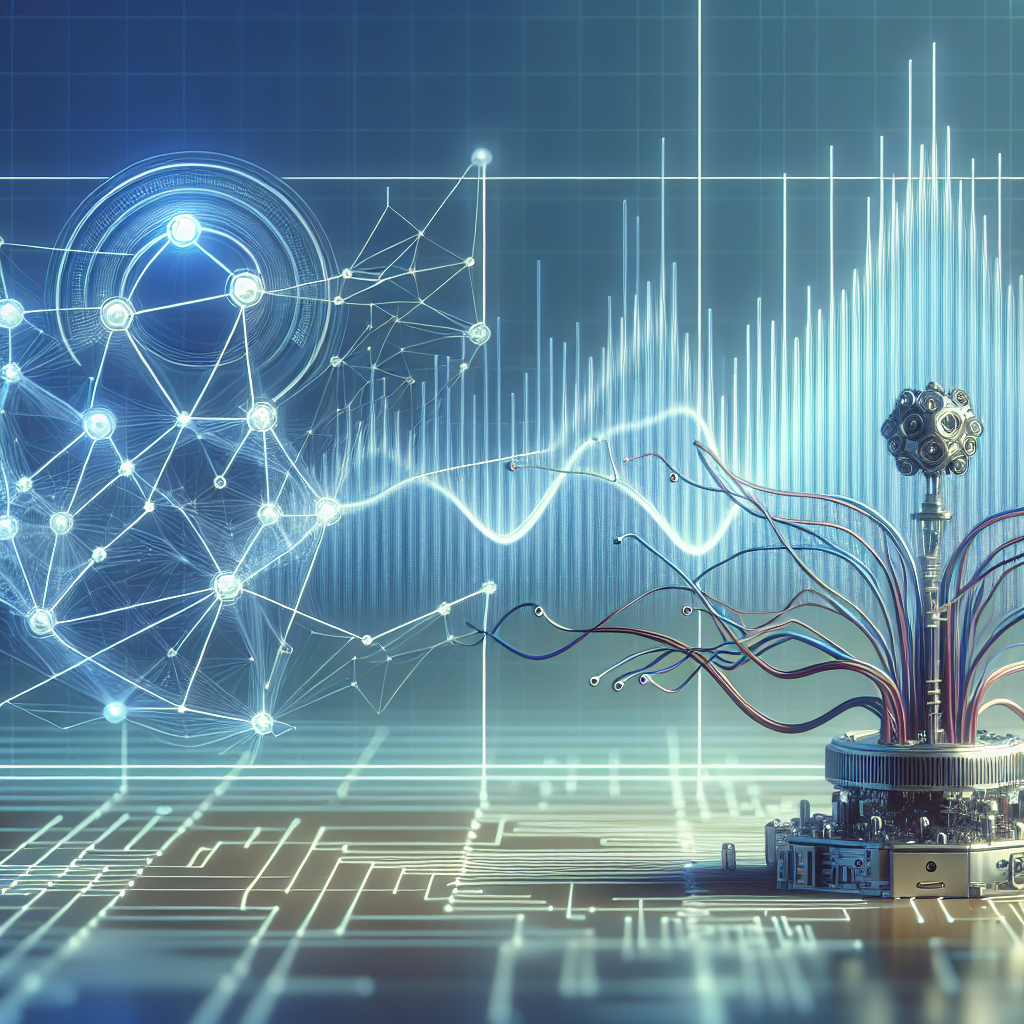
How Recurrent Neural Networks Are Revolutionizing Time Series Forecasting
Time series forecasting is a critical aspect of many industries, from finance to healthcare to marketing. Accurately predicting future trends and patterns can help businesses make informed decisions and stay ahead of the competition. Traditional forecasting methods, such as ARIMA models, have long been used to analyze time series data. However, these methods have limitations when it comes to capturing complex relationships and patterns in the data.Enter recurrent neural networks (RNNs), a powerful type of deep learning model that is revolutionizing time series forecasting. RNNs are designed to handle sequential data, making them particularly well-suited for time series analysis. Unlike traditional models, RNNs have the ability to remember past information and use it to make predictions about future data points.
One of the key advantages of RNNs is their ability to capture long-term dependencies in the data. This is achieved through the use of recurrent connections, which allow information to flow from one time step to the next. By learning from past data points, RNNs are able to make more accurate predictions about future trends and patterns.
Another important feature of RNNs is their ability to handle variable-length sequences. This is particularly useful in time series forecasting, where the length of the time series data may vary. RNNs are able to adapt to different sequence lengths, making them versatile and robust models for forecasting tasks.
In addition to their flexibility and ability to capture complex relationships in the data, RNNs can also be trained using backpropagation through time (BPTT). This allows the model to learn from its mistakes and improve its predictions over time. By iteratively adjusting the model parameters based on errors in prediction, RNNs can continuously improve their forecasting accuracy.
Overall, recurrent neural networks are revolutionizing time series forecasting by providing more accurate and flexible models for analyzing sequential data. With their ability to capture long-term dependencies, handle variable-length sequences, and improve over time through training, RNNs are quickly becoming the go-to choice for businesses looking to make more informed decisions based on time series data. As the field of deep learning continues to advance, we can expect RNNs to play an increasingly important role in shaping the future of time series forecasting.
#Recurrent #Neural #Networks #Revolutionizing #Time #Series #Forecasting,rnn
The Power of Marchyorktimes: How One Platform is Revolutionizing the News Industry
In today’s fast-paced world, staying informed and up-to-date with current events is more important than ever. With the rise of social media and digital news platforms, accessing news has never been easier. However, with the vast amount of information available, it can be overwhelming to sift through and find reliable sources.Enter Marchyorktimes, a revolutionary news platform that is changing the way we consume news. Founded by a team of seasoned journalists and tech experts, Marchyorktimes has quickly become a go-to source for breaking news, analysis, and opinion pieces.
So, what sets Marchyorktimes apart from other news platforms? The answer lies in its innovative approach to news delivery. Marchyorktimes utilizes cutting-edge technology to curate and deliver news content tailored to each user’s preferences and interests. By using machine learning algorithms, Marchyorktimes is able to provide users with a personalized news feed that is constantly evolving based on their reading habits and feedback.
In addition to personalized news feeds, Marchyorktimes also offers a wide range of features that enhance the user experience. From interactive graphics and videos to in-depth investigative reports, Marchyorktimes provides a comprehensive and engaging news experience that goes beyond just headlines.
But perhaps the most powerful aspect of Marchyorktimes is its commitment to journalistic integrity and accuracy. With a team of experienced journalists and fact-checkers, Marchyorktimes ensures that all news content is thoroughly researched and verified before being published. This dedication to accuracy sets Marchyorktimes apart from other news platforms that may prioritize speed over accuracy.
Furthermore, Marchyorktimes is also committed to promoting diverse voices and perspectives in its news coverage. By featuring a wide range of contributors and viewpoints, Marchyorktimes aims to provide a more comprehensive and nuanced understanding of current events.
In conclusion, Marchyorktimes is revolutionizing the news industry by offering a personalized, engaging, and reliable news experience. With its innovative technology, commitment to accuracy, and dedication to diverse voices, Marchyorktimes is setting a new standard for news delivery in the digital age. Whether you’re a news junkie or just looking to stay informed, Marchyorktimes is the platform to watch in the ever-evolving world of journalism.
#Power #Marchyorktimes #Platform #Revolutionizing #News #Industry,how marchyorktimes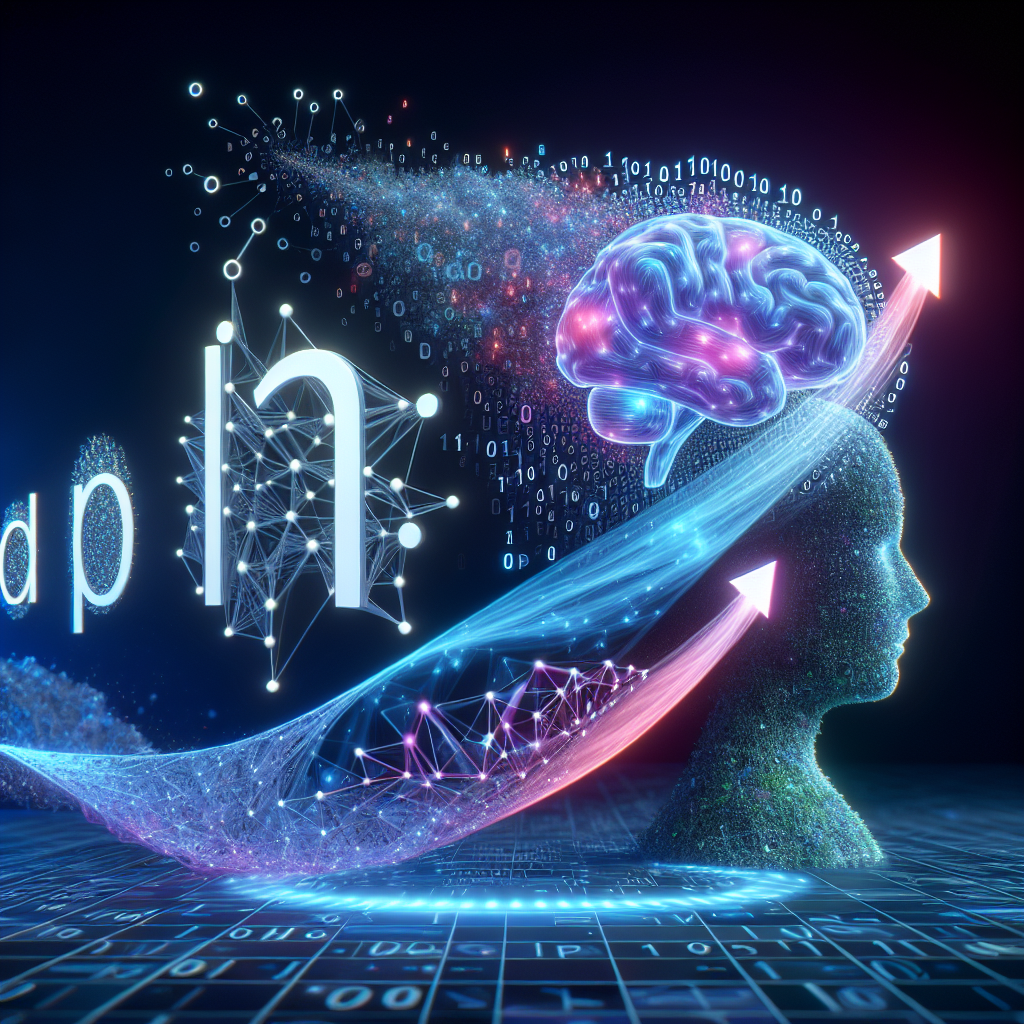
From GANs to NLP: How Generative Adversarial Networks Are Revolutionizing Language Processing
Generative Adversarial Networks (GANs) have been making waves in the field of artificial intelligence and machine learning for their ability to generate realistic images, videos, and even music. But now, researchers are harnessing the power of GANs to revolutionize another area of AI: natural language processing (NLP).NLP is a branch of artificial intelligence that focuses on the interaction between computers and human language. It involves tasks such as language translation, sentiment analysis, and text summarization. Traditionally, NLP models have relied on statistical methods and rule-based algorithms to process and generate human language. However, these methods often struggle with understanding context, nuance, and subtlety in language.
Enter GANs. These neural network models consist of two components: a generator and a discriminator. The generator creates new samples that mimic the data it was trained on, while the discriminator tries to distinguish between real and generated samples. Through this adversarial process, GANs learn to generate increasingly realistic data.
In the context of NLP, researchers are using GANs to improve language generation tasks such as text completion, dialogue generation, and text summarization. By training GANs on large datasets of text, researchers can create models that can generate coherent and contextually relevant language.
One of the key advantages of using GANs for NLP is their ability to capture the underlying structure and patterns in language. Traditional NLP models often struggle with generating diverse and creative language, while GANs excel at producing novel and realistic text.
For example, researchers at OpenAI have developed a GAN-based language model called GPT-3 (Generative Pre-trained Transformer 3), which has the ability to generate human-like text across a wide range of tasks. GPT-3 has been hailed as a major breakthrough in NLP, demonstrating the potential of GANs to revolutionize language processing.
In addition to improving language generation tasks, GANs are also being used to enhance other aspects of NLP, such as language translation and sentiment analysis. By training GANs on multilingual datasets, researchers can create models that can accurately translate between languages. Similarly, GANs can be used to generate text with specific emotional tones, allowing for more nuanced sentiment analysis.
Overall, GANs are opening up new possibilities for the field of NLP by enabling more sophisticated and creative language processing. As researchers continue to push the boundaries of what is possible with GAN-based models, we can expect to see even more exciting advancements in the field of language processing in the years to come.
#GANs #NLP #Generative #Adversarial #Networks #Revolutionizing #Language #Processing,gan)
to natural language processing (nlp) pdf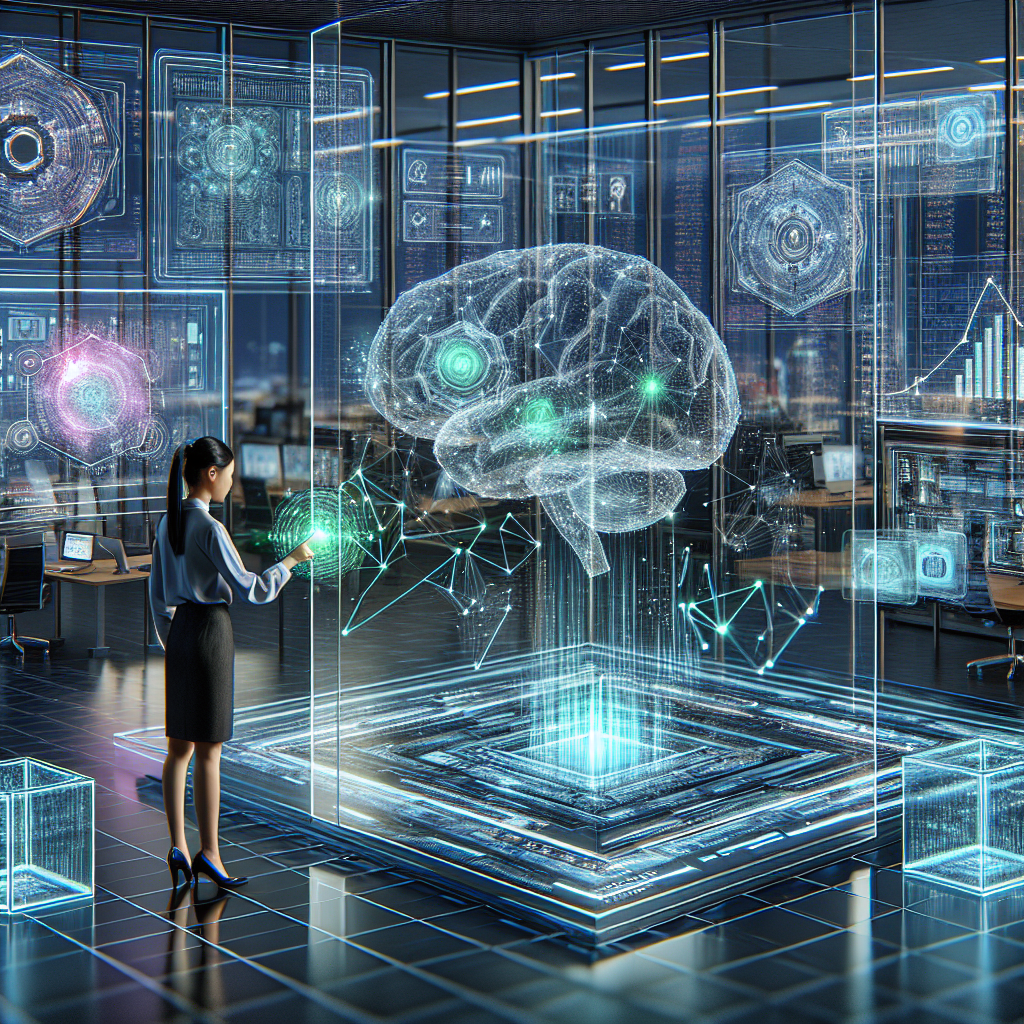
How GNN is Revolutionizing Fraud Detection in Finance
Fraud detection in finance has long been a critical issue for financial institutions, as fraudulent activities can result in significant financial losses and damage to their reputation. Traditional methods of fraud detection, such as rule-based systems and manual reviews, have proven to be insufficient in detecting and preventing increasingly sophisticated forms of fraud. However, with the advent of advanced technologies such as artificial intelligence and machine learning, a new era of fraud detection has emerged.One of the most innovative technologies driving this revolution in fraud detection is Graph Neural Networks (GNN). GNN is a type of neural network that is specifically designed to analyze and interpret complex relationships and patterns within data. By leveraging the power of GNN, financial institutions are able to detect and prevent fraudulent activities more effectively and efficiently than ever before.
One of the key advantages of GNN in fraud detection is its ability to analyze large volumes of data in real-time. Traditional fraud detection systems often struggle to keep pace with the sheer volume and velocity of data generated in the digital age. GNN, on the other hand, is able to process massive amounts of data quickly and accurately, enabling financial institutions to identify suspicious patterns and anomalies in real-time.
Furthermore, GNN is highly adaptable and can continuously learn and improve its fraud detection capabilities over time. By analyzing historical data and detecting patterns of fraudulent activities, GNN can continually update its algorithms to stay ahead of emerging fraud trends. This level of adaptability is crucial in the ever-evolving landscape of financial fraud, where fraudsters are constantly devising new tactics to evade detection.
Another key advantage of GNN in fraud detection is its ability to detect complex and subtle patterns that may go unnoticed by traditional rule-based systems. Fraudsters are becoming increasingly sophisticated in their methods, making it increasingly challenging for financial institutions to detect fraudulent activities. GNN’s ability to analyze and interpret intricate relationships within data allows for the detection of even the most subtle signs of fraudulent behavior.
Overall, GNN is revolutionizing fraud detection in finance by providing financial institutions with a powerful tool to combat fraud effectively and efficiently. By leveraging the capabilities of GNN, financial institutions can stay ahead of emerging fraud trends, protect their assets, and safeguard their reputation in an increasingly digital and interconnected world. As fraudsters continue to evolve and adapt their tactics, GNN stands as a crucial defense against financial fraud, ensuring the security and stability of the financial system.
#GNN #Revolutionizing #Fraud #Detection #Finance,gnn
